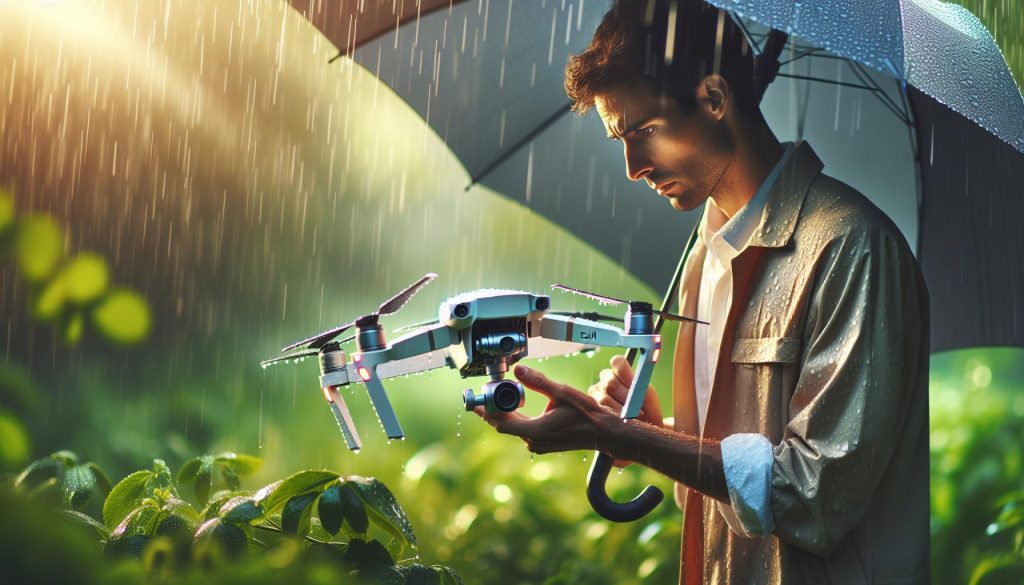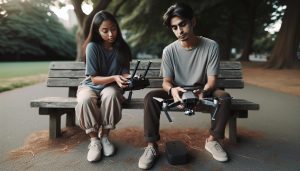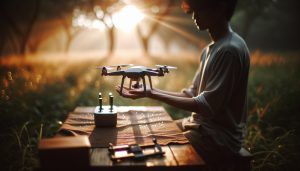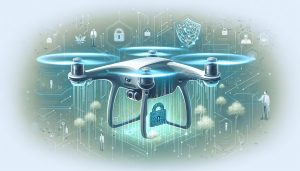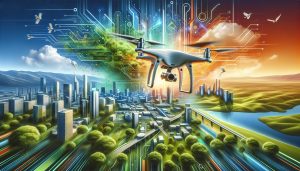When it comes to capturing breathtaking aerial views, the last thing you want is an unexpected downpour ruining your DJI drone experience. Understanding whether DJI drones are water-resistant is crucial for both hobbyists and professionals. While some models offer varying degrees of protection against the elements, like the M300 with an IP54 rating, many enthusiasts wonder if a fully waterproof device is on the horizon. This article delves into the protective levels of DJI drones, addressing your concerns about safety in wet conditions and helping you make informed decisions for your outdoor adventures. Join us as we explore what these ratings mean and how they can directly impact your flying experience.
Are DJI Drones Designed for Water Exposure?
When it comes to technology and innovation in aerial imaging, DJI has established itself as a leader, but many users often wonder whether these drones can withstand water exposure. While the majority of consumer-grade DJI drones are not fully waterproof, some models are designed with varying levels of water resistance that can offer users a layer of protection against rain and splashes. The more advanced models, such as the DJI M300 RTK, have been engineered to handle challenging weather conditions; it boasts an IP45 rating, indicating a degree of protection against dust and low-pressure water jets. This makes it suitable for operation in light rain, giving operators the confidence to conduct important missions without the constant worry of moisture damage.
Understanding the water resistance ratings of DJI drones is crucial for informed operation. The IP (Ingress Protection) ratings explain what levels of dust and moisture a drone can withstand. For instance, while many consumer drones have minimal resistance, commercial models like the M300 RTK can endure harsher environments. It’s important for users to recognize that although some models may handle brief exposure to rain, they are not designed for extended submersion. Therefore, knowing your drone’s limitations helps in planning flights, especially in regions prone to sudden weather changes.
Flying a DJI drone in wet conditions requires a thoughtful approach. Before taking off, ensure that all openings, such as battery compartments and gimbal doors, are securely closed. Post-flight, inspect the drone for any signs of moisture intrusion, particularly around sensitive electronic components. In case exposure to water occurs, the immediate response is vital; drying the drone and removing the battery can prevent long-term damage. Ultimately, DJI drones are imbued with certain water-resistant features, but users should always exercise caution and adhere to guidelines to protect their investment and ensure safe operations in various environmental conditions.
Understanding DJI Drone Water Resistance Ratings
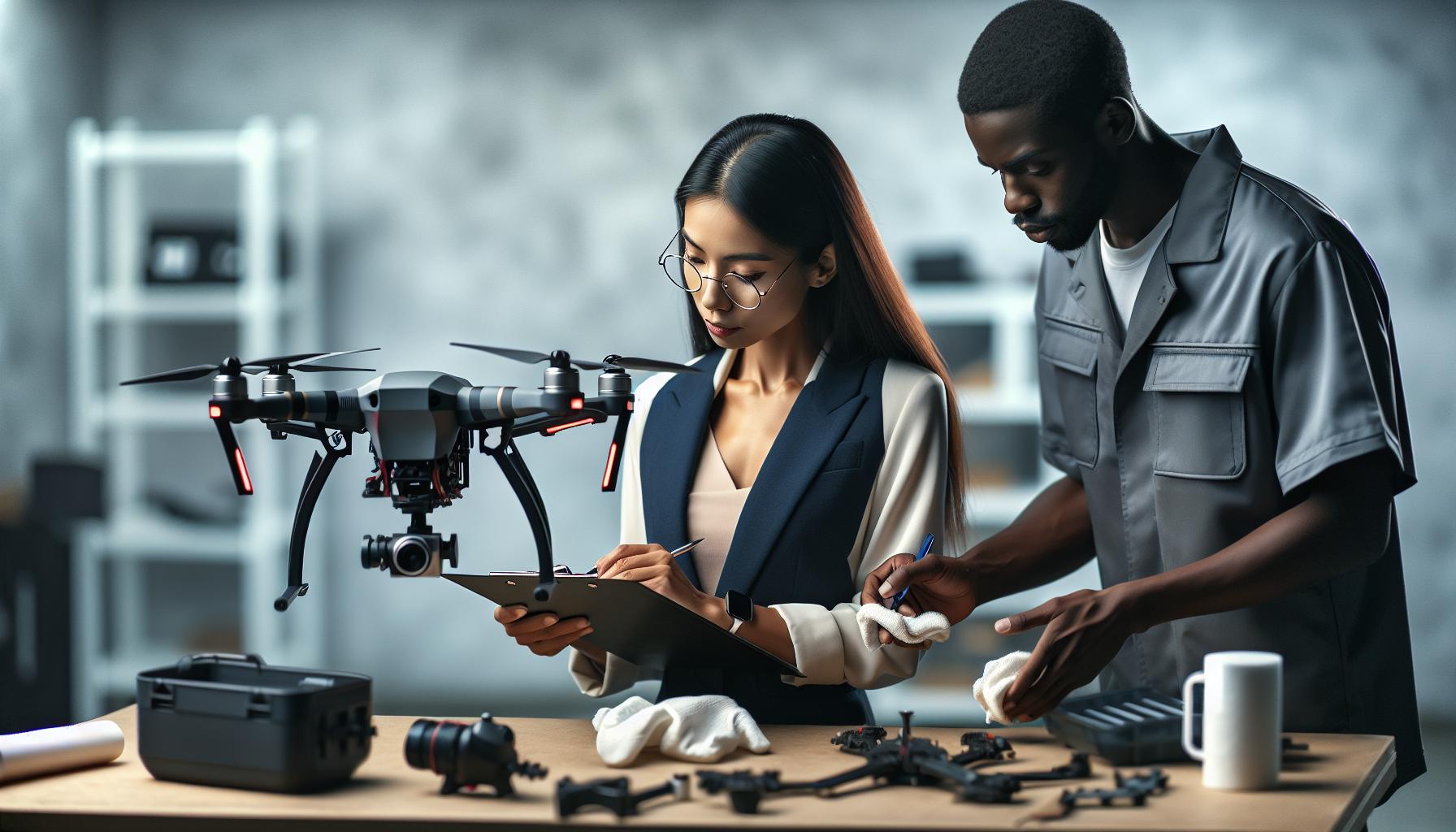
Understanding the water resistance of DJI drones is essential for any operator looking to push the limits of flight in challenging weather conditions. DJI employs the IP (Ingress Protection) rating system, which classifies the degree of protection that its drones have against dust and moisture. For example, an IP rating of IP45 indicates protection against dust and low-pressure water jets from any direction. This rating means that while the drone can endure light rain or splashes, it is not suitable for prolonged exposure to heavier rain or submersion in water.
When evaluating different DJI models, it’s clear that they are engineered with varying levels of water resistance. The more advanced commercial models, like the DJI M300 RTK, feature an IP rating that allows them to operate in more demanding environments compared to consumer drones from the Mavic or Phantom series, which typically have minimal resistance. This stark difference underscores the importance of selecting the right drone for your intended use, particularly if you plan to fly in areas with unpredictable weather.
Practical Implications
For drone enthusiasts and professionals alike, understanding these ratings translates to responsible flying practices. Always check the specifications of your drone and consider the forecast before flight. If you know you’ll be flying in conditions that may include unexpected moisture, ensure your drone’s openings (such as battery compartments and gimbal doors) are securely closed and inspect your drone after flights for any signs of wetness. These precautionary measures will help safeguard your investment and ensure a prolonged lifespan for your equipment.
In summary, while DJI drones offer certain levels of water resistance, they are not impermeable. Familiarizing yourself with these ratings and their practical implications is not only beneficial for your drone’s performance but is also essential for maximizing your aerial adventures while minimizing risk. For optimal flight safety, always plan accordingly and respect the limitations of your specific drone model.
Comparing Water Resistance Across DJI Models
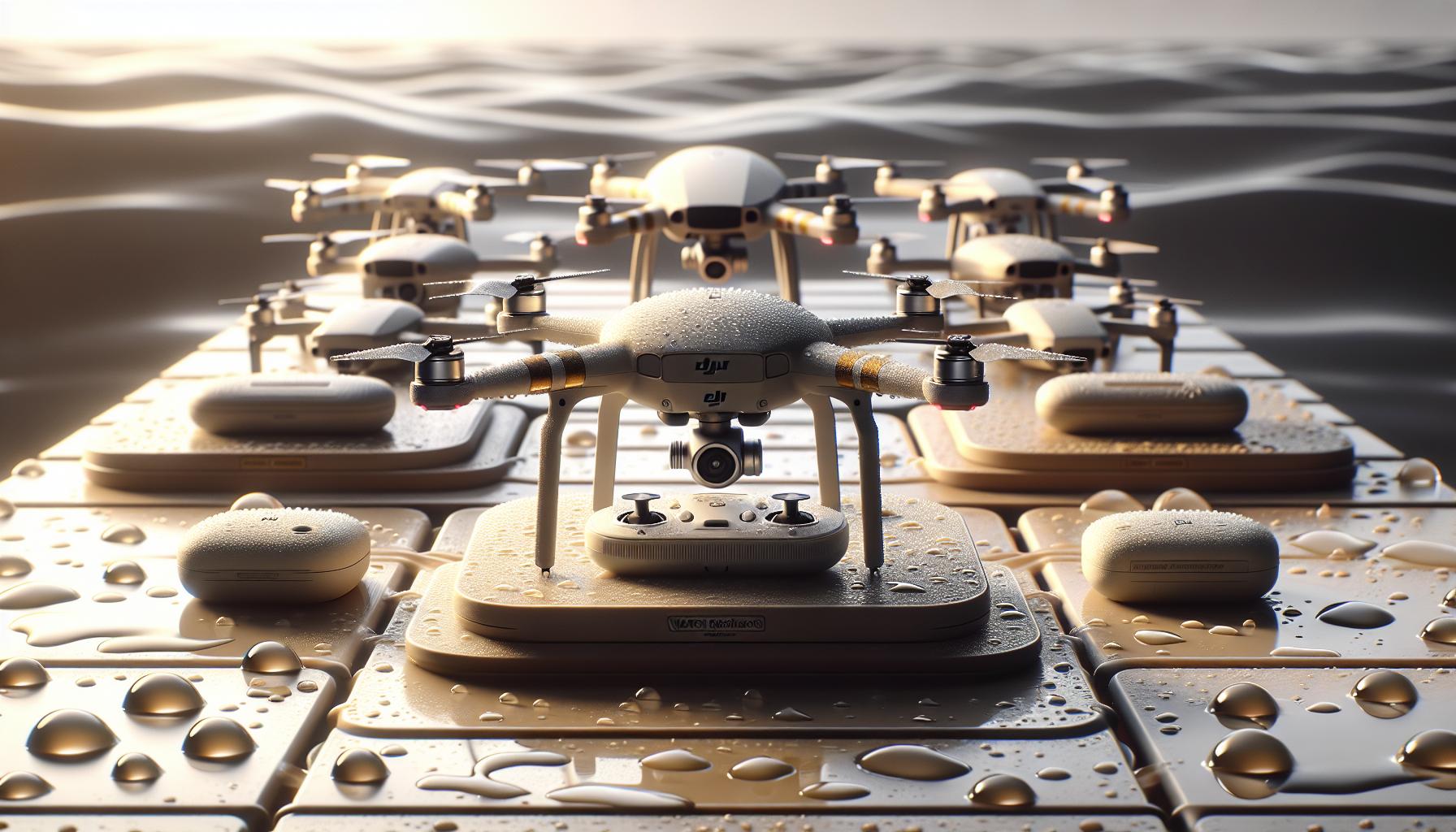
Many drone operators often find themselves in situations where weather conditions can change abruptly. Understanding how different DJI models handle water exposure is not just a matter of technical specifications, but also a practical consideration for safe and effective flying. Each DJI drone carries a specific IP (Ingress Protection) rating, which provides insight into its ability to resist water and dust, ultimately influencing your choice based on your flying environment.
When , commercial drones like the DJI M300 RTK stand out due to their robust design, featuring an IP45 rating. This means they are rated to withstand limited exposure to water and can perform effectively in rain, making them suitable for industrial applications where weather unpredictability is a factor. In contrast, consumer drones such as the Mavic series typically come with lower IP ratings, often around IP43, which signifies that they can handle light splashes but are not built for more substantial exposure. This distinction is crucial; flying a consumer drone in rainy conditions could lead to irreversible damage.
To help you navigate the nuances, here’s a quick comparison table:
| Model | Water Resistance Rating | Operating Conditions |
|---|---|---|
| DJI M300 RTK | IP45 | Can operate in rain and damp environments |
| DJI Mavic 3 | IP43 | Suitable for light rain and splashes |
| DJI Phantom 4 | IP43 | Recommended to avoid wet conditions |
While some DJI drones can handle minor wet conditions, it is vital to consider your specific requirements. For hobbyists and professionals looking to shoot in diverse environments, choosing a drone with higher water resistance is advisable to ensure gear longevity and reliable operation. Additionally, always consult weather forecasts, and if you anticipate challenging conditions, prepare your drone with proper protective measures or consider postponing your flight. Understanding these differences will greatly enhance your flying experience and help you protect your investment against the elements.
Tips for Flying DJI Drones in Wet Conditions
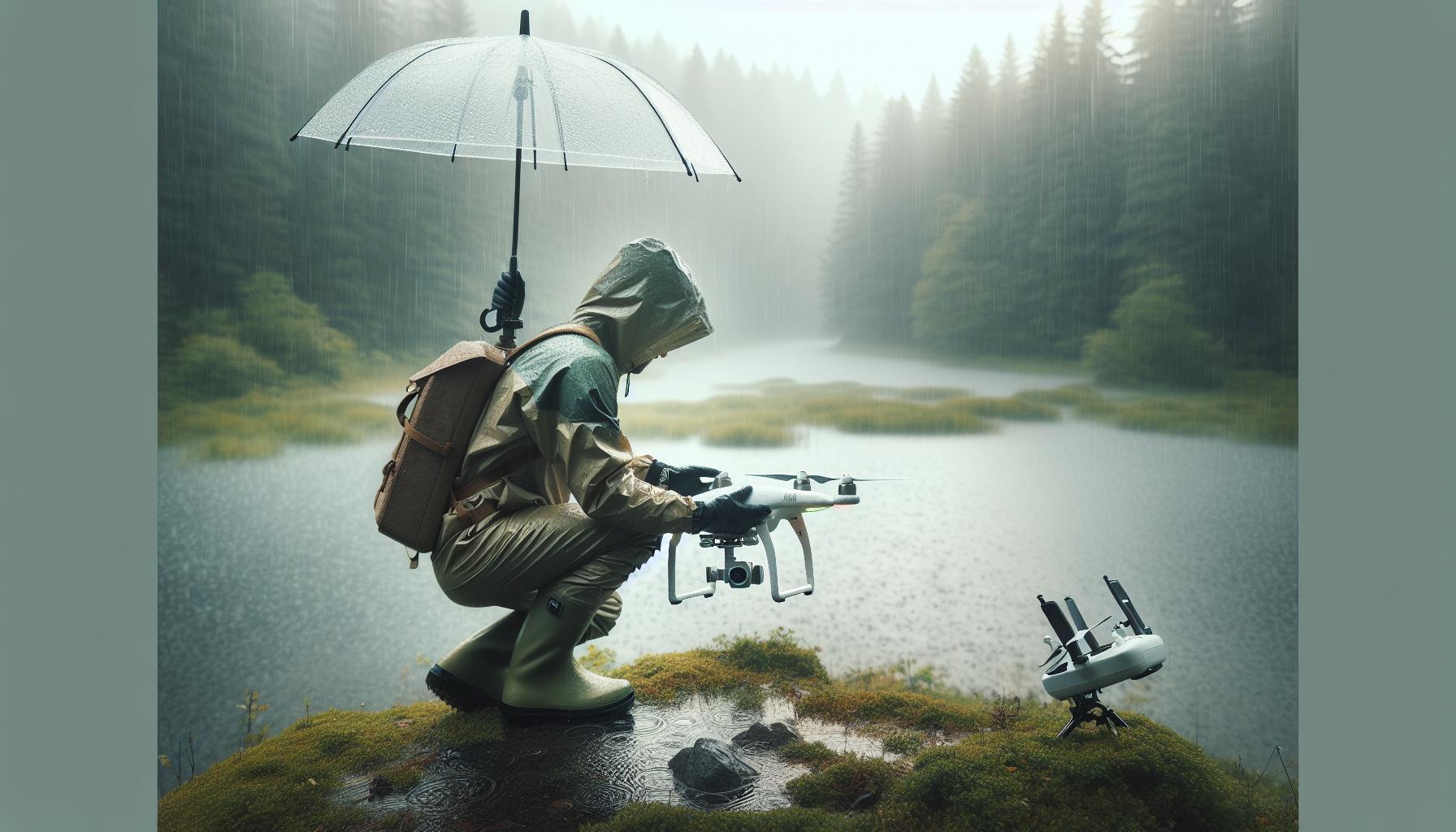
Navigating the skies with a DJI drone during wet weather can be exhilarating, but it also requires a strategic approach to ensure your equipment remains safe and operational. The first and foremost rule is to understand the limitations of your specific drone model. While some models may withstand gentle drizzles, others are susceptible to more severe moisture. For instance, the DJI M300 RTK flaunts an IP45 rating, making it suitable for light rain, whereas the Mavic series is often better suited for dry conditions. Always refer to your drone’s specifications to determine its water resistance capabilities.
When planning to fly in wet conditions, consider adjusting your flight style. Maintain a lower altitude, as flying higher increases the risk of water settling on sensitive components upon descent. Also, keep the flight duration shorter; this minimizes exposure to the elements and allows you to return to dry ground promptly. Flying with caution is essential; avoid sudden moves that could lead to water splashing up into the drone’s body. Neutral maneuvers keep your drone steady and reduce the likelihood of splashes from below.
Additionally, pre-emptive measures can greatly enhance your drone’s resistance to moisture. Applying silicone sealant or using specialized water-resistant covers can create a barrier against splashes. For those who often find themselves flying in unpredictable conditions, investing in a reliable waterproof storage case will ensure that your drone is protected when not in use.
Lastly, keep an eye on the weather forecast and be prepared for sudden changes. If the conditions start to worsen, bringing your drone back to a safe location should take priority. With these proactive steps and mindful practices, you can confidently operate your DJI drone under less-than-ideal conditions while safeguarding against potential water damage.
What to Do If Your DJI Drone Gets Wet
If your DJI drone encounters unexpected moisture, swift action can mean the difference between a minor mishap and severe damage. The first step is to safely bring your drone down if it’s still airborne. Avoid attempting to land in water; instead, maneuver to a dry area as quickly as possible. Once you have your drone back on solid ground, assess the situation to determine the extent of the exposure.
Immediately power off the drone to prevent electrical short-circuits. Removing the battery is crucial, as it not only cuts off power but also reduces the risk of fires or further electrical damage. After powering down, gently wipe the exterior of the drone with a soft, dry cloth to remove excess moisture. Avoid using heat sources like hair dryers or radiators, as they can warp components or damage sensitive electronic parts.
Drying Process
Start the drying process by following these steps:
- Disassemble where possible: Remove any detachable components such as propellers, memory cards, and cameras if you can do so easily. This allows better airflow and accelerates drying.
- Use silica gel or rice: Place the disassembled parts in a container filled with silica gel packets or uncooked rice, which can help absorb moisture. Leave them for at least 24-48 hours.
- Avoid direct sunlight: Keep your drone and its components in a cool, dry place away from direct sunlight, as excessive heat can damage plastics and electronics.
Post-Drying Check
Once you believe the moisture is gone, conduct a thorough inspection. Check for signs of corrosion or water damage, especially around connectors and circuit boards. Before reassembling everything, it’s wise to wait at least 48 hours to be certain all moisture has evaporated.
If your drone shows any signs of malfunction or you suspect water infiltration has affected internal components, seek professional assistance. This action ensures that your beloved drone remains operational and prolongs its lifespan, allowing you to get back in the air without worries. Taking these proactive measures can turn a potentially stressful situation into an opportunity to reinforce your drone care skills.
Maintenance Tips for Water-Resistant Drones
To ensure your water-resistant DJI drone continues to perform optimally, regular maintenance is vital. This not only helps to reinforce its protective features but also enhances its longevity and reliability during flights, especially in challenging weather conditions.
One of the most effective ways to maintain your drone’s water resistance is through regular inspections. After every flight, particularly in wet environments, examine the drone for any signs of moisture accumulation or debris. Pay particular attention to seals and gaskets around critical components, as these areas are susceptible to wear and tear. Cleaning them gently with a soft, dry cloth can help maintain their integrity. Moreover, consider applying a protective spray designed for electronic devices, which can provide an additional layer of moisture shielding.
Storage plays a significant role in protecting your drone from potential water damage. Always keep your DJI drone in a sealed, dry case when not in use, particularly if you live in a humid environment. This helps prevent condensation and protects it from accidental spills or exposure to rain. Furthermore, always ensure that the drone is completely dried and free of moisture before packing it away, as residual water can lead to corrosion over time.
In addition to proper storage, performing firmware updates regularly is crucial. DJI frequently releases updates that may include improvements in handling external conditions and optimizing water-resistant features. Keeping your drone’s firmware up to date not only enhances its performance but can also refine its handling and safety systems under various environmental conditions.
Lastly, anticipate the conditions you are flying in and modify your maintenance activities accordingly. For example, if you often fly in areas prone to rain or humidity, consider more frequent checks and thorough cleanings. By being proactive in your approach, you’ll help your drone withstand the elements, allowing for a more enjoyable and worry-free flying experience.
Accessories to Enhance Water Protection
Ensuring your DJI drone remains safe from water exposure not only protects your investment but can also enhance your flying experience in various conditions. As drone technology continues to evolve, various accessories designed to augment water resistance are increasingly available. These tools can provide an additional layer of protection and peace of mind for both hobbyists and professional operators who frequently fly in variable weather.
One of the most straightforward accessories to consider is a waterproof case. Investing in a well-sealed, padded carry case can safeguard your drone during transport and storage, minimizing the risk of water damage. Look for cases that feature customizable foam inserts to cradle your specific drone model, keeping it secure while offering robust protection against the elements. Silica gel packs can also be helpful when storing your drone to absorb any ambient moisture in the case, providing an extra defense mechanism against corrosion.
Another valuable accessory is a drone skin or waterproof cover specifically engineered for your model. These skins are tailored to fit snugly over the drone’s body, offering an additional layer that repels water while minimizing impact on the drone’s aerodynamics and cooling system. Make sure to select covers made from breathable materials to allow heat dissipation while keeping moisture out. Additionally, consider using protective sprays that provide a water-repellent coating on electronic components, further safeguarding them without bulky encasements.
For those flying in wet environments or during light rain, engineered gimbal covers can prevent water from compromising sensitive camera equipment. Selecting an option with good water resistance and easy installation will allow you to focus on capturing stunning aerial shots without worry. Lastly, to augment buoyancy and enhance emergency landing capabilities in wet areas, consider adding floatation devices to your drone. These accessories can help keep your drone afloat in case of an accidental water landing, making recovery easier and reducing the risk of damage.
By employing these accessories, you can enhance the water resistance of your DJI drone significantly, allowing you to explore new environments and seize opportunities for breathtaking photography regardless of the forecast.
Real-Life User Experiences with DJI Drones and Water
Flying drones in wet conditions can create an exciting but also risky adventure for aerial enthusiasts. Many users have shared their firsthand experiences managing water exposure with DJI drones, telling stories that often highlight the balance between innovation and caution. For instance, one user reported flying a DJI Mavic Air 2 through light rain, noting the drone’s advertised water resistance capabilities. They managed to capture stunning footage with no damage, reinforcing the idea that while these drones are designed to handle minor moisture, pilots must remain vigilant and avoid more substantial exposure.
Another memorable experience came from a user who inadvertently flew their DJI Mini 2 near a water body during a gusty wind. The wind caught the drone, causing it to topple into the lake. Luckily, they had equipped the drone with flotation devices, which allowed it to stay afloat until recovery. This scenario reiterated the importance of preparation and equipment modifications to safeguard against water emergencies, especially in unpredictable environments.
Moreover, many enthusiasts recommend maintaining proper aftercare when a drone encounters water. One drone operator described their meticulous routine after a flight in humid conditions, which included wiping down the drone, checking for moisture in the crevices, and storing it in a dry, ventilated space. These practices illustrate how diligent maintenance can prolong the life of a drone and mitigate the effects of water exposure.
The community also expresses a collective understanding that while DJI drones boast impressive engineering, they are not designed for submersion or heavy rainfall. Users emphasize respecting weather conditions and adhering to guidelines on water resistance ratings. With shared insights about both successful and cautionary tales, DJI pilots continue to learn from one another, fostering a culture of safety while exploring the exhilarating possibilities that aerial photography and videography can provide.
Legal Implications of Flying in Water-Prone Areas
To navigate the intricate world of drone use, particularly in water-prone areas, it’s essential to consider the legal implications that accompany such flying conditions. Many operators may not realize that flying in locations susceptible to water exposure can introduce a unique set of regulatory challenges. These can include local laws regarding public spaces, privacy concerns when filming in natural bodies of water, and specific regulations that apply to watercraft and aerial devices alike.
Understanding local regulations is paramount. Many municipalities have specific rules regarding drone usage over water to protect wildlife and natural habitats. For instance, some areas may restrict flights over lakes, rivers, and wetlands, especially during certain seasons to avoid disturbing nesting birds or other wildlife. Before launching your drone, it’s advisable to consult with local authorities or review municipal codes. Operators should ensure they comply not just with Federal Aviation Administration (FAA) guidelines but also with state and local laws that could impose additional restrictions.
Moreover, operating a drone in water-prone environments necessitates a keen awareness of liability issues. If a drone malfunctions and crashes into a public body of water, this could raise questions regarding damage to local ecosystems or property. Operators could be held responsible for any harm caused to wildlife or for violating environmental protections, which can lead to fines or legal actions. It’s crucial for drone pilots to carry appropriate insurance coverage to protect against potential claims resulting from unintended damage caused by their drone operations.
Finally, documenting each flight, especially in sensitive areas, can serve as a governmental and legal safeguard. Keeping a flight log that outlines where and when you flew, along with any interactions with wildlife or monitoring agencies, can provide valuable protection against potential disputes. Setting up clear communication with local environmental groups or agencies may also enhance transparency in your operations, allowing for a more secure experience while capturing those stunning aerial views over water.
In conclusion, while the use of drones in water-prone areas offers fantastic opportunities for photography and exploration, a responsible operator must prioritize legal compliance, ensure adequate insurance, and maintain proper documentation. This proactive approach not only fosters a culture of responsibility among drone pilots but also protects the breathtaking environments we seek to capture.
DIY Solutions for Enhancing DJI Drone Water Resistance
To safeguard your DJI drone from unexpected water exposure, many pilots turn to DIY solutions that enhance water resistance. While most DJI drones come with a degree of water resistance rated by the manufacturer, these ratings may not cover every scenario, especially in unpredictable weather or when flying over water. Here are some practical techniques and materials to improve your drone’s watertight capabilities.
One effective method is to apply a waterproof coating to key electronic components and connections. Conformal coating sprays are designed for this purpose and can be found at electronic supply stores. They form a protective layer on circuit boards and sensitive parts, helping prevent moisture damage. Just be sure to carefully apply it without blocking vents or connectors, and allow adequate drying time before using your drone.
In addition to coatings, consider modifying your drone’s components. For instance, using silicone grommets or O-rings on exposed screws and openings can significantly improve resistance to water ingress. When replacing or upgrading parts, such as cameras or antennas, search for water-resistant alternatives or those that come with pre-installed seals.
Furthermore, creating a DIY splash guard is another creative way to protect your drone. This can be made from lightweight plastics or even rubber materials cut to size, strategically placed under motors or propellers to direct water away and minimize splash damage. Some pilots have successfully implemented this by attaching custom designed 3D-printed enclosures around sensitive areas.
Lastly, a simple yet effective solution is to keep a dry bag or waterproof pouch in your flight pack. If you find yourself flying in damp conditions, you can quickly secure your drone in this containment for short periods, ensuring it stays protected between captures.
By utilizing these methods, you can enhance your DJI drone’s water resistance and prolong its lifespan against the elements. Always remember, however, that while these modifications can help, they do not make your drone fully waterproof, so exercise caution in wet environments.
Q&A
Q: Are any DJI drones waterproof?
A: No DJI drones are completely waterproof. However, some models, like the DJI M300 RTK, feature a water resistance rating of IP45, allowing them to withstand moderate rain and moisture. It’s essential to avoid submerging the drones in water entirely.
Q: What is the IP rating for DJI drones and what does it mean?
A: The IP rating indicates the level of protection against dust and water. For example, the M300 RTK’s IP45 rating means it is protected against water splashes from all directions but not from direct water jets or full submersion.
Q: Can I fly my DJI drone in the rain?
A: It’s not advisable to fly DJI drones in heavy rain, as water can potentially damage them. Models like the M300 RTK may handle light rain due to their ratings, but it’s best to check the weather and avoid flying in adverse conditions.
Q: How can I protect my DJI drone from water damage?
A: To protect your DJI drone from water, consider using protective cases or drone covers designed for wet weather. Avoid flying in heavy rain, and ensure that all compartments are closed securely to prevent moisture ingress.
Q: What should I do if my DJI drone gets wet?
A: If your DJI drone gets wet, immediately turn it off and remove the battery. Allow it to dry completely for at least 48 hours before attempting to power it on again. Consider using silica gel packets to help absorb moisture.
Q: What are common misconceptions about DJI drone water resistance?
A: A common misconception is that DJI drones are waterproof. While some models have water resistance features, they cannot be submerged and should not be operated in heavy rainfall or extreme wet conditions.
Q: How do different DJI drone models compare in terms of water resistance?
A: Water resistance varies among DJI models. The M300 RTK boasts an IP45 rating, while others may have lower ratings or no protection against water exposure. Always check the specifications for each model before use in wet environments.
Q: Are there accessories to enhance the water protection of DJI drones?
A: Yes, there are several accessories available, such as waterproof bags and covers that can help provide additional protection from moisture. These can be especially helpful in unexpected rain or misty conditions.
Wrapping Up
In summary, understanding the water resistance levels of DJI drones is crucial for ensuring the longevity and performance of your investment. With varying degrees of protection across models, it’s essential to know the specifications to make informed decisions about where and how you fly. Remember, while some drones can withstand light moisture, using them in heavy rain or submerging them can lead to irreversible damage.
Don’t hesitate to explore our in-depth guides on drone maintenance and best practices to enhance your flying experience. For the latest on drone regulations and safe flying tips, check out our articles on legal compliance and indoor flying techniques. Want to stay informed? Sign up for our newsletter for updates on the latest releases and expert advice. Your next adventure awaits-fly smart and keep your drone protected!

